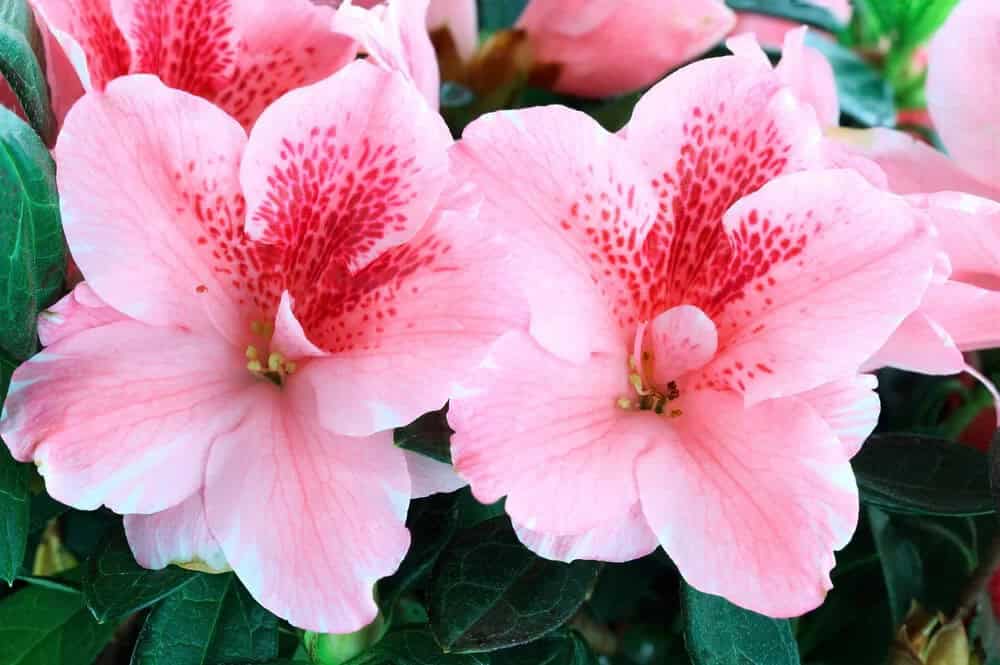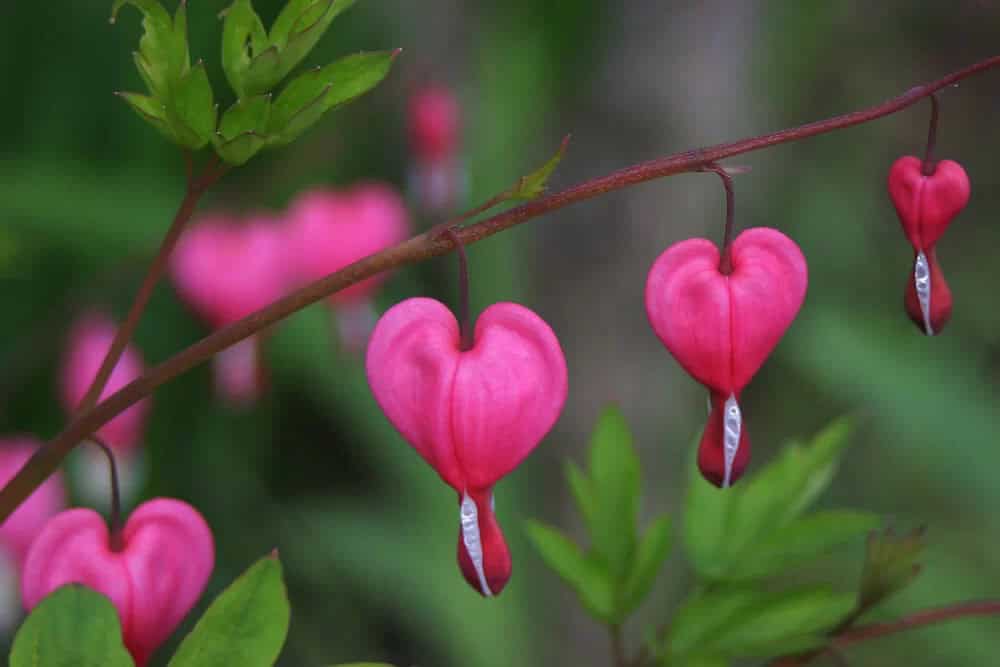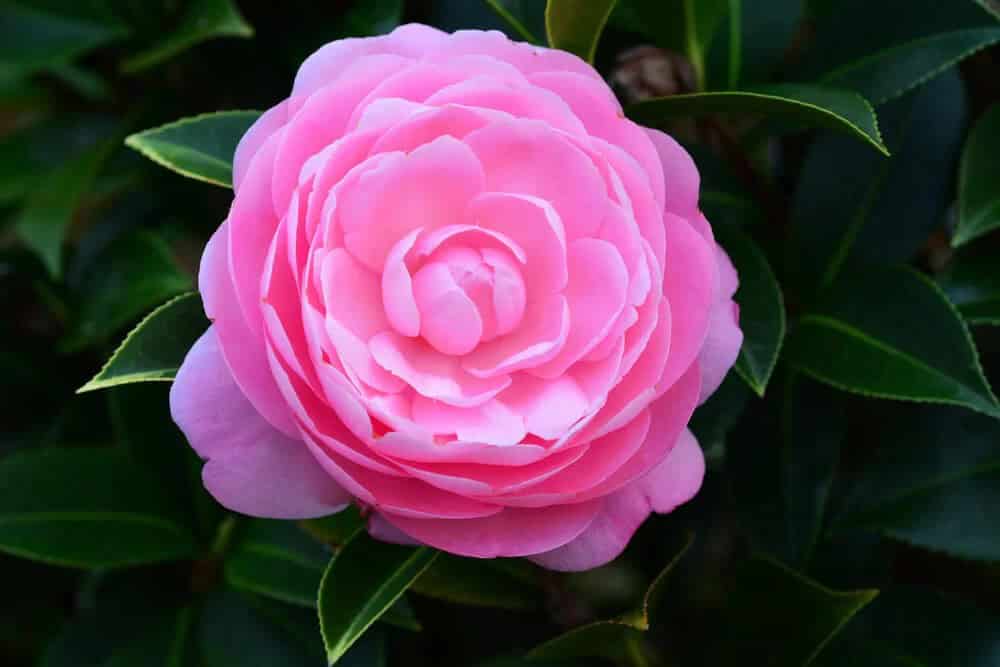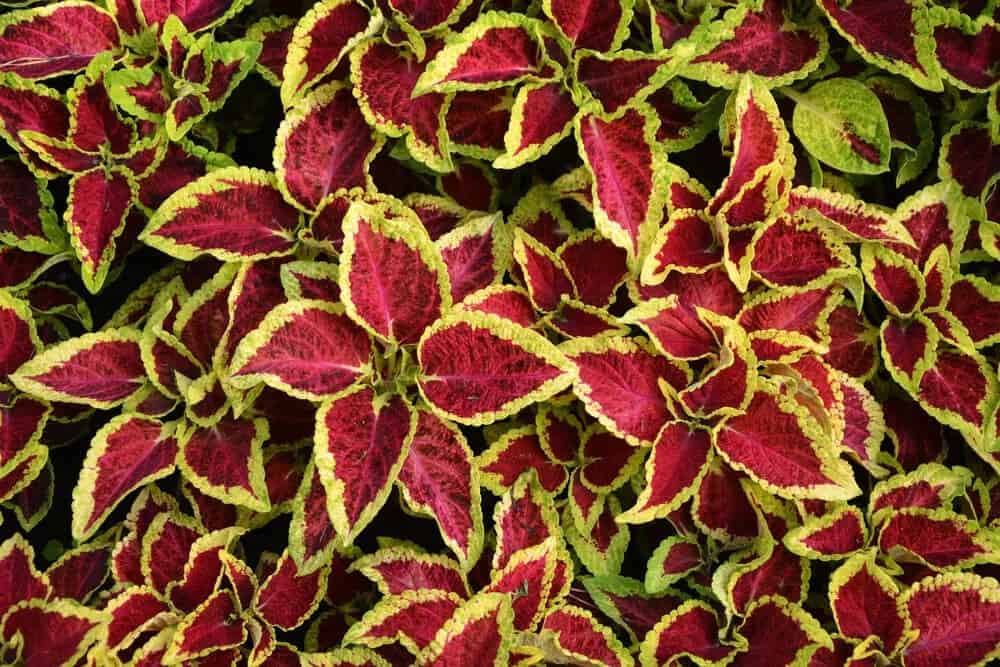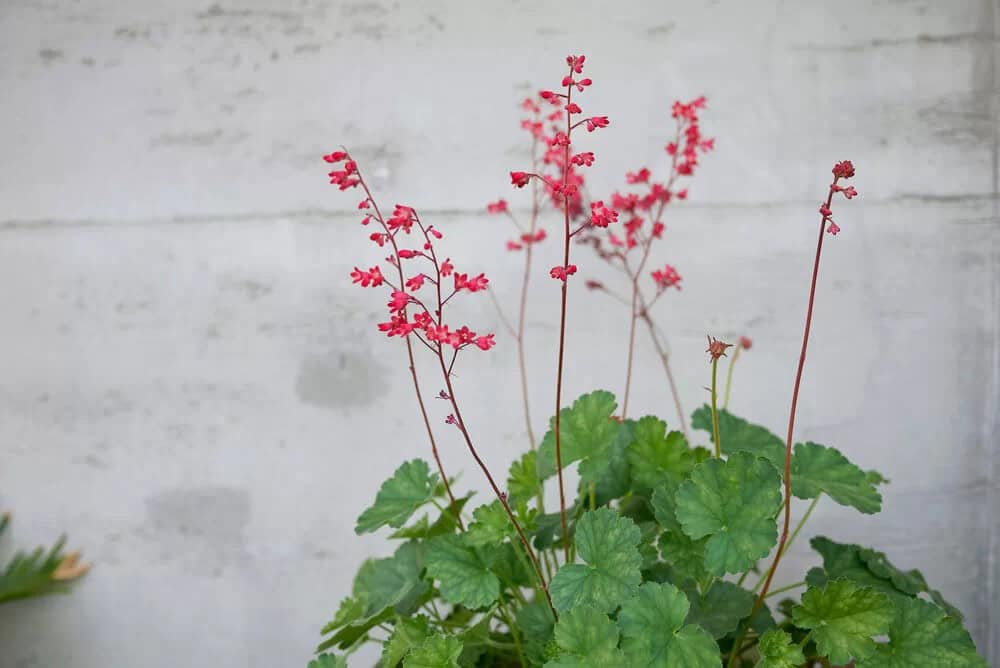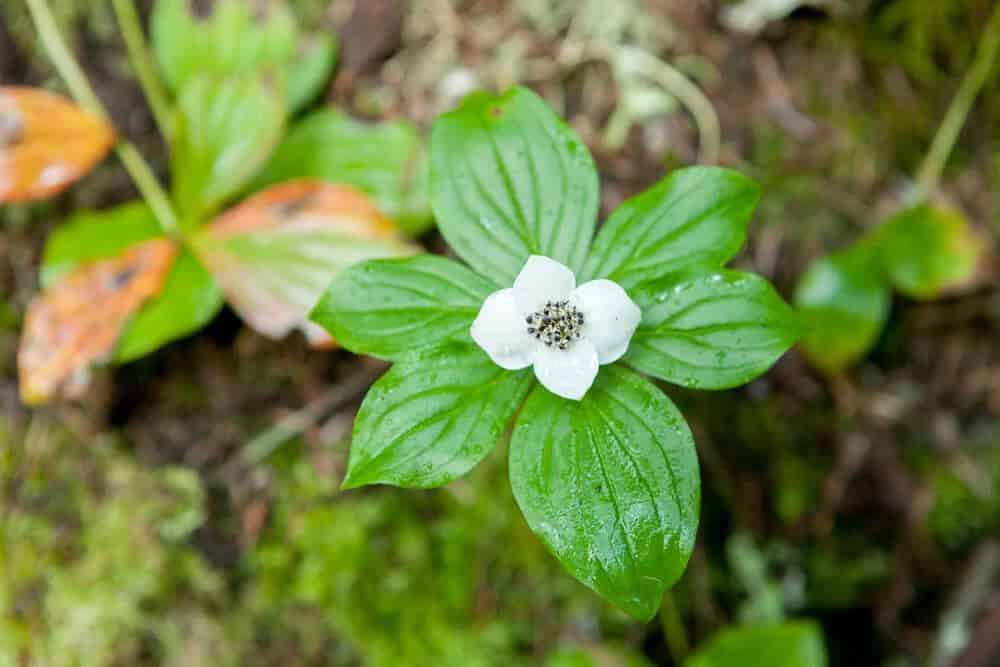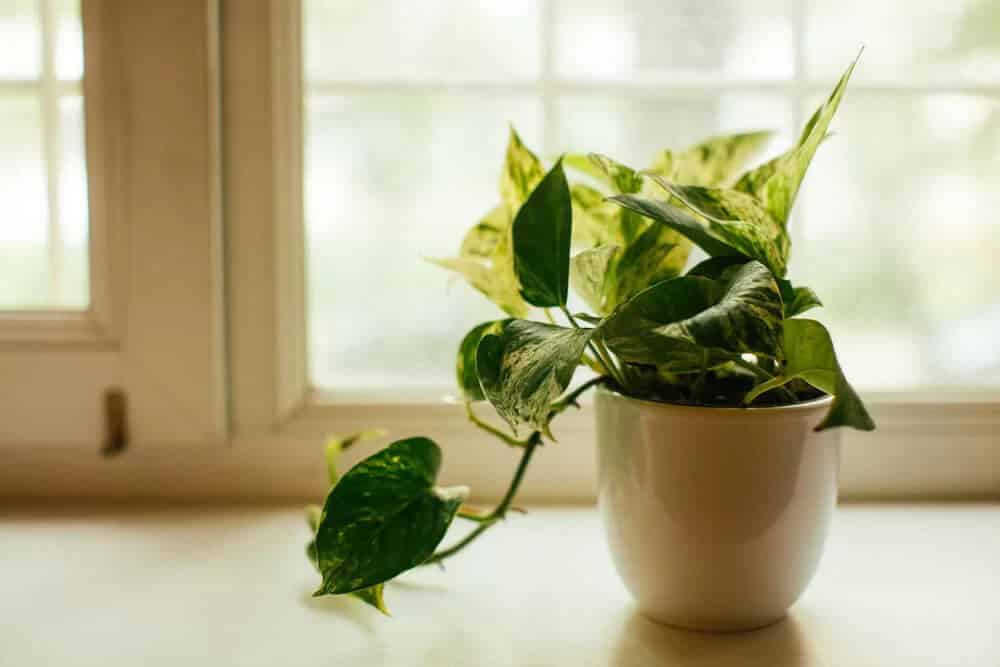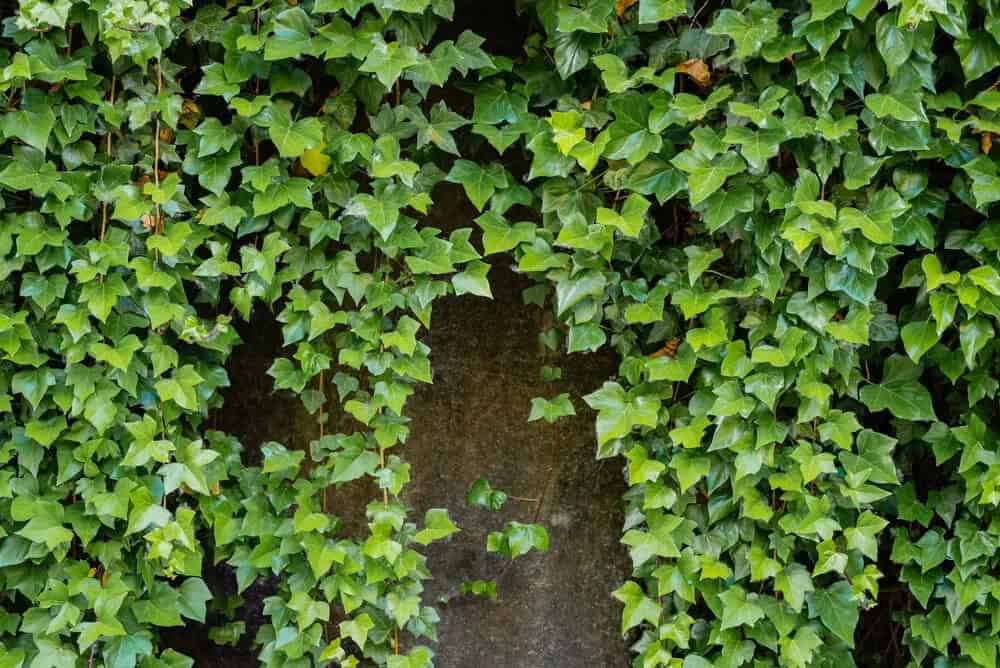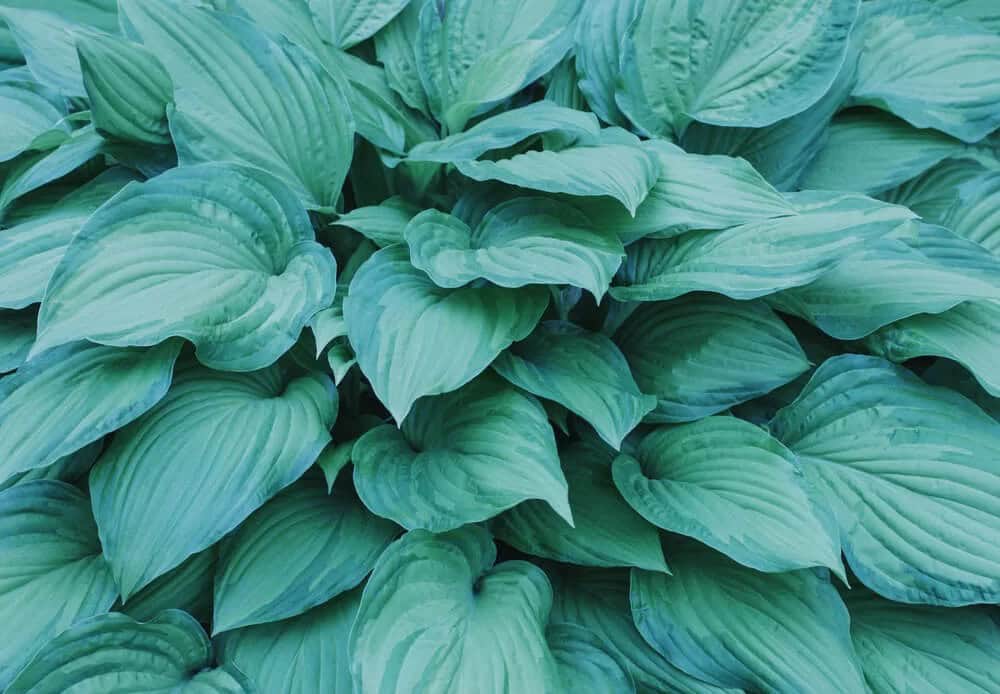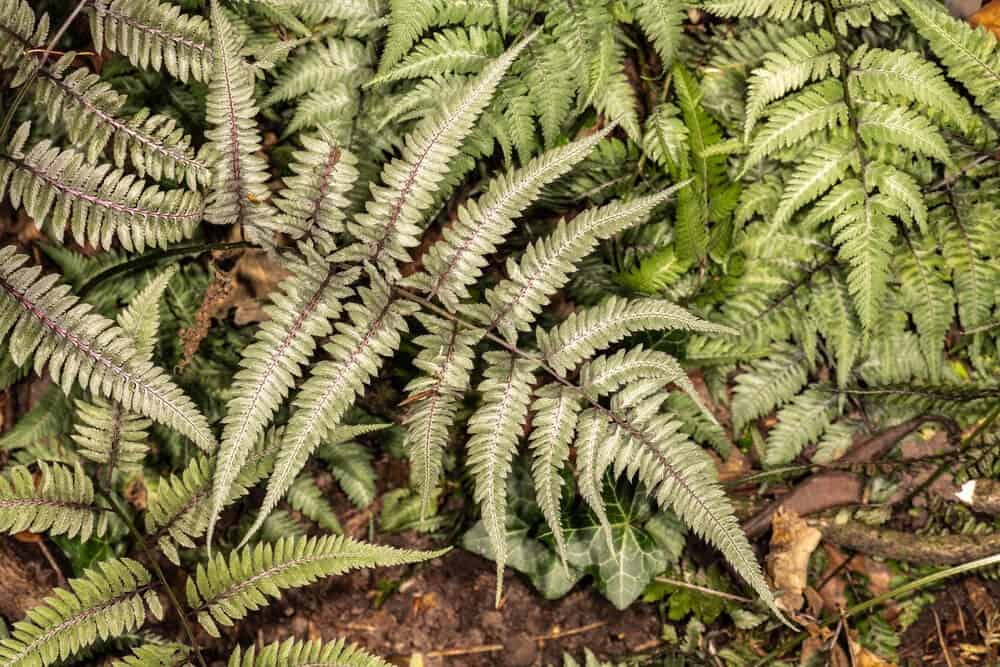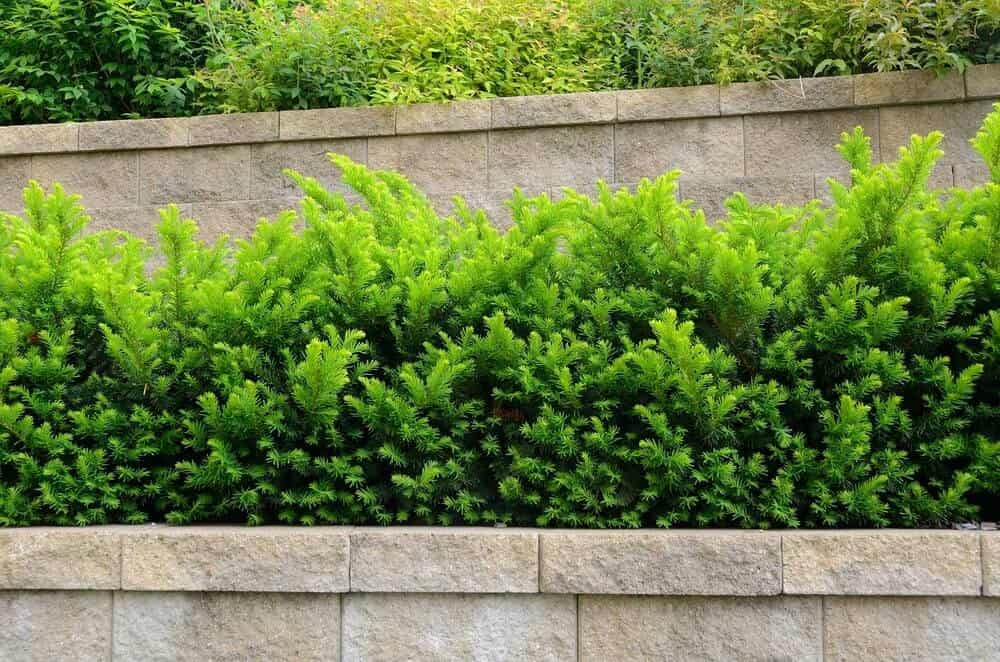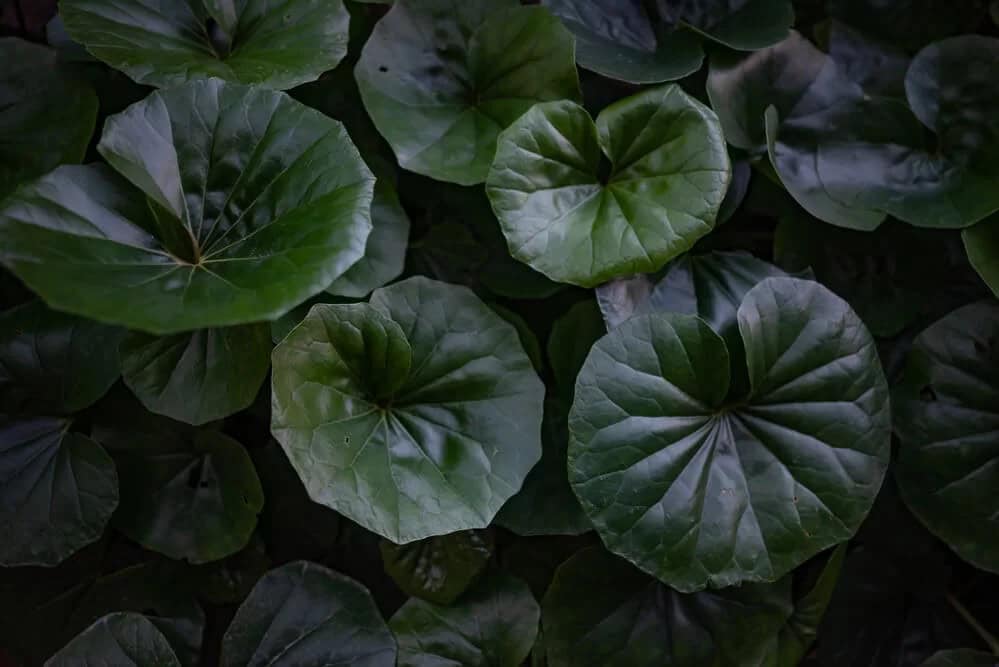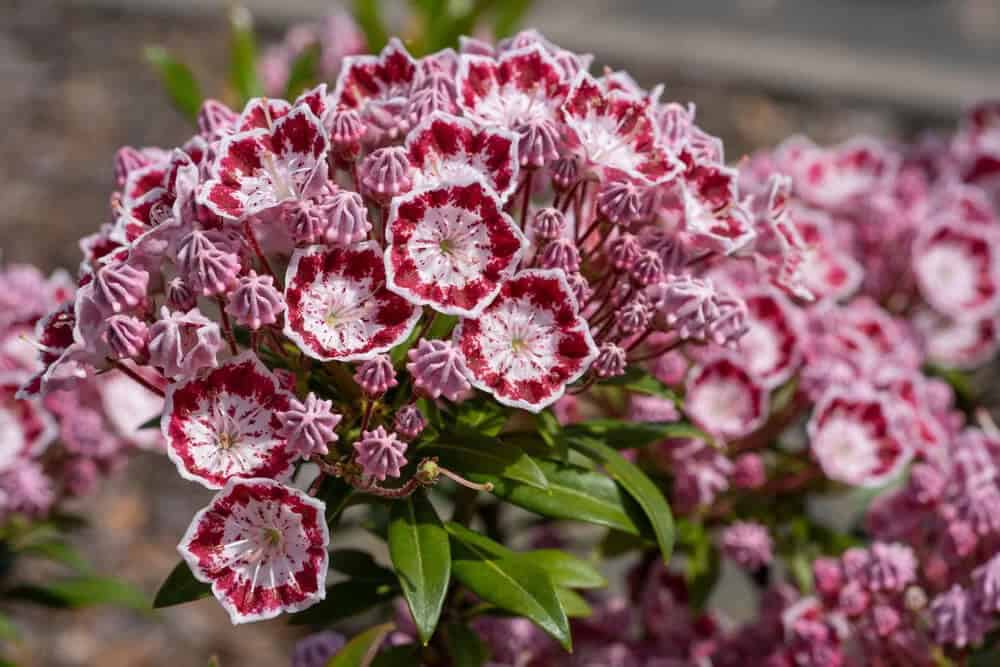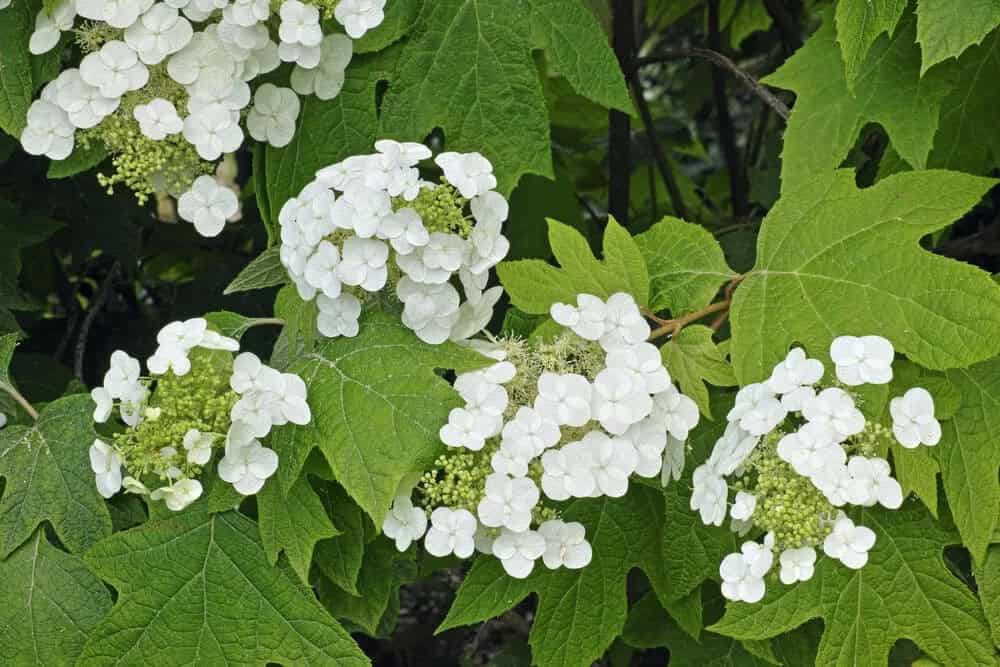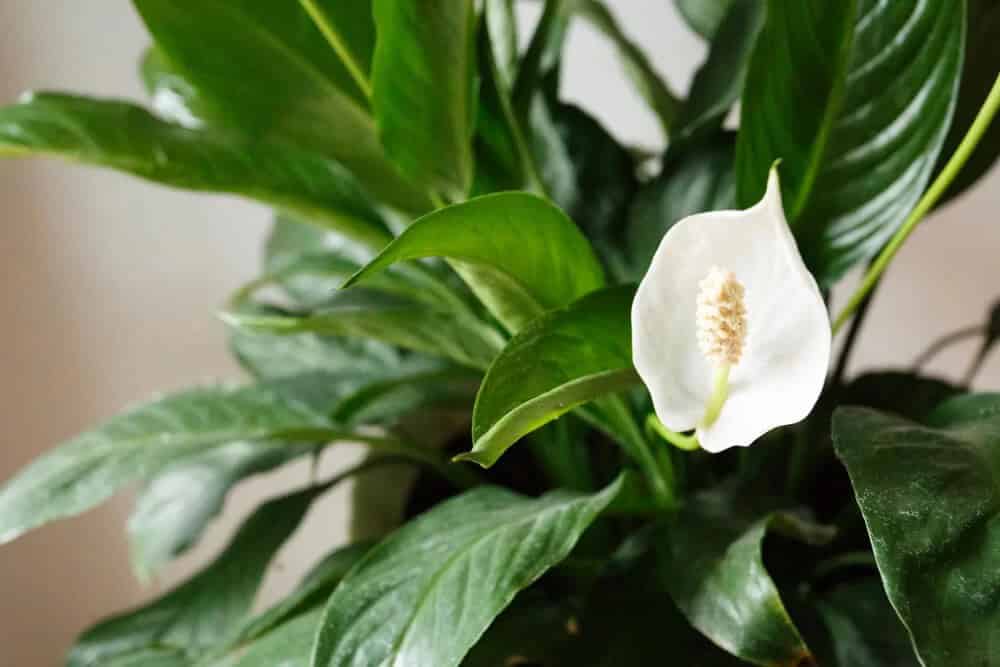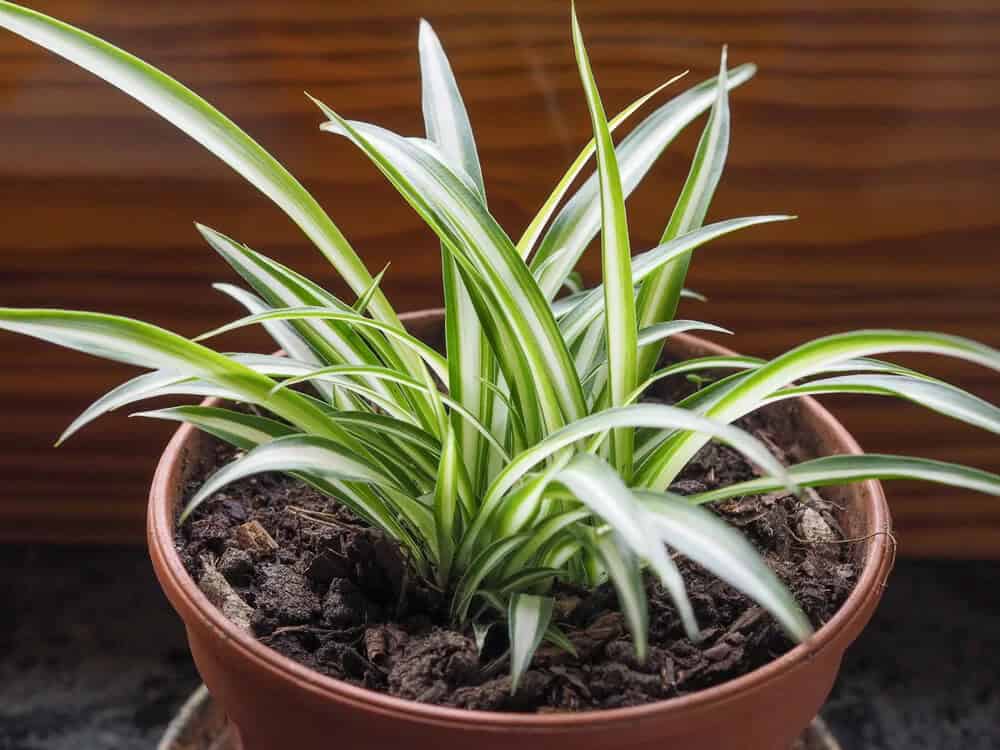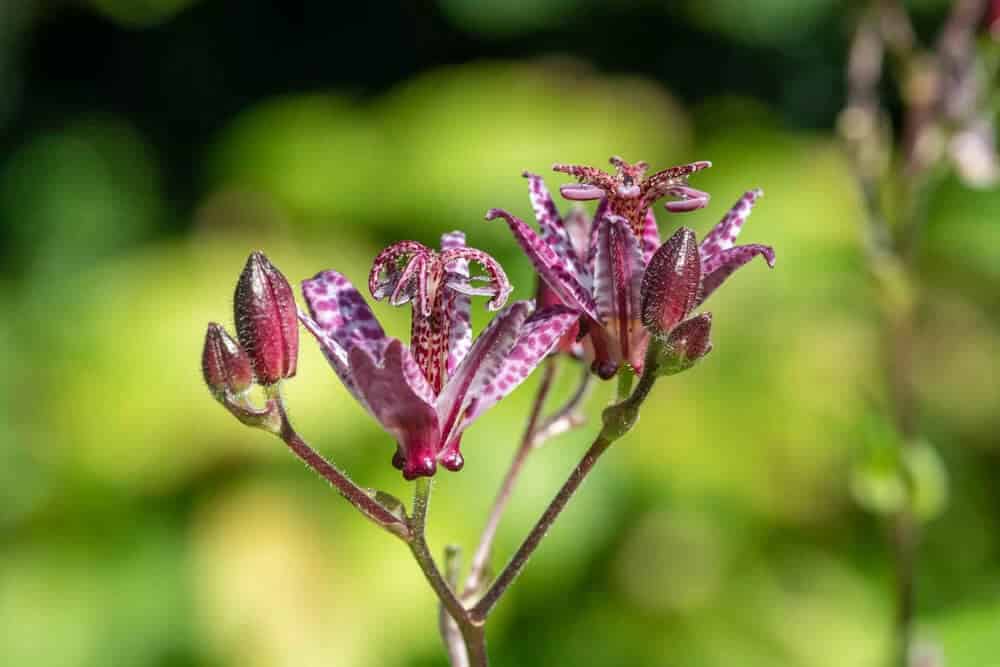While it’s common for individuals to feel intimidated by the prospect of gardening in full-shade areas, the reality is that there are numerous plants that thrive in such conditions. This misconception can be attributed to a lack of awareness about the many shade-loving species available. In this article, we’ll dispel these doubts and highlight the variety of options that can enhance your landscape’s aesthetic appeal, even when faced with minimal daily light.
Key Takeaways
As you delve into the world’s best 25 full-shade plants, you’ll discover a treasure trove of knowledge. Amidst this wealth of information, three overarching themes emerge, serving as a thread throughout the article: the diversity of plant types, the vibrancy of their hues, the uniqueness of their foliage, and the adaptability to indoor spaces or natural environments.
25 Beautiful Plants that Grow in Full Shade and will Make Your Garden Look Fantastic
Astilbe (Astilbe)
While astilbe may not be as widely recognized as some other perennial plants, it is a standout option for areas that receive partial shade to full shade. Characterized by its large leaves with intricate margins, the plant’s unique texture is a defining feature. But what truly sets astilbe apart are its dramatic floral displays, which take the form of spike-shaped clusters of tiny flowers standing tall above the foliage during the summer and fall seasons.
These long-lasting blooms come in a range of hues, including white, pink, and purple, making them a valuable addition to any shaded garden.
Azalea (Rhododendron)
Azalea shrubs, part of the Rhododendron genus, showcase an incredible diversity through various species and cultivars. While each type may offer distinct flower color options, they commonly share traits like exceptional low-light tolerance. This impressive ability to thrive in shade is just one feature that sets azaleas apart as some of the most stunning broad-leaved evergreen plants.
Bleeding Heart (Lamprocapnos spectabilis)
Bleeding heart’s unique features make it a standout on this list. Its arching stems, adorned with delicate flowers that resemble hearts, are a striking sight. The vibrant magenta hue only adds to its charm. This shade-loving perennial can grow quite large, often taking on a shrub-like appearance by the end of the growing season. Its impressive size and ornamental value make it an ideal choice for adding visual interest to the shadier areas of your yard.
Camellia (Camellia japonica)
The allure of camellia is undeniable, its beauty almost impossible to dispute. This charming plant transforms into a stately multi-stemmed tree form, boasting a rounded canopy comprising dark green, glossy evergreen leaves that provide a lush backdrop for the striking floral displays within. The bold, rose-like blooms often exhibit geometric patterns, adding an extra layer of visual interest. Notably, camellias thrive in areas with limited light exposure.
While this plant’s attributes make it an attractive choice for shaded gardens, it’s essential to consider its hardiness limitations – typically surviving only in zones 7 through 9 before deciding on its place in your outdoor space.
Chinese Evergreen (Aglaonema)
The Chinese evergreen’s adaptability to low-light conditions makes it a prime candidate for indoor cultivation. Its moderate mature size, reaching approximately three by three feet, also makes it an ideal choice for potting and incorporating into an indoor garden setup. However, what truly sets this plant apart is the striking yet understated beauty of its leaves, which typically feature intricate patterns of dark green and pale greenish-white hues.
Coleus (Plectranthus scutellarioides)
Coleus plants are renowned for their stunning foliage displays. With an array of options available, each boasting vibrant color patterns that defy imagination, it’s no wonder they’re a favorite among plant enthusiasts. However, to maintain the striking appearance of these leaves, it’s essential to provide coleus with partial shade or filtered sunlight to prevent leaf scorch and faded colors.
As such, they’re an ideal choice for areas receiving full shade, making them a versatile addition to any garden.
Coral Bells (Heuchera)
If you’ve ever struggled to find a tiny, shade-loving plant for a compact growing space, you’re not alone. The good news is that coral bells offer a perfect solution to this problem. This perennial’s growth habits are well-suited to small spaces, reaching only about 18 inches in height and spreading minimally. What’s more, coral bells come in a range of foliage colors, from standard green to bronzy or purplish hues.
While the leaf color may vary, the plant’s charming bell-shaped flowers provide a delightful pop of color when it blooms.
Creeping Dogwood (Cornus canadensis)
While the flowering dogwood tree is widely admired for its stunning beauty, few people are aware that it has a low-growing relative that shares many striking similarities. The creeping dogwood, as its name suggests, grows along the ground, typically reaching only a few inches in height. Despite its diminutive stature, this plant’s leaves, flowers, and fruits bear a remarkable resemblance to those of the iconic tree dogwoods.
You’ll often find creeping dogwoods thriving in forested areas, where they bask in the full shade they adore. In fact, their preference for shaded environments makes them well-suited to coexist with the towering trees that surround them.
Devil’s Ivy (Epipremmum aureum)
For indoor gardeners facing the challenge of cultivating plants that flourish in low-light conditions, finding species that can tolerate – let alone thrive in – full shade is often the ultimate goal. One such solution lies in the devil’s ivy plant, which has earned its reputation for being remarkably resilient and adaptable to environments with limited sunlight.
Despite receiving minimal direct sun exposure, devil’s ivy continues to exhibit a remarkable growth rate, making it an ideal choice for those seeking to bring some greenery into their homes or offices.
English Ivy (Hedera helix)
English ivy stands out as a versatile and adaptable species, capable of flourishing even in conditions with limited sunlight. As such, it’s an excellent choice for low-light areas where other plants might struggle to survive. Its unique evergreen leaves are particularly distinctive, featuring a trident shape and dark, glossy green surfaces that provide year-round interest.
But what really sets English ivy apart is its ability to be cultivated in various forms, including variegated foliage options that offer an added layer of visual appeal.
Fuchsia (Fuchsia)
Contrary to popular opinion, the notion that full-shade gardens lack vibrancy is a misconception. While it’s true that certain plants are more radiant in full or partial sunlight, the fuchsia plant proves that there are indeed stunning blooms that flourish in full shade. Not only do these flowers boast an unparalleled beauty, but they also come in shades of purple and pink that are truly breathtaking.
Their unique dangling shape adds to their allure, making them a standout feature in any garden, regardless of sun exposure.
Hay-Scented Fern (Lamprocapnos spectabilis)
In its natural habitat, hay-scented fern thrives in moist woodland areas, where it can bask in partial or full shade. Despite being a subtle presence in terms of color palette, this plant’s unique foliage makes it an attractive addition to any shaded garden. As the seasons change, each year brings new life as the fronds emerge from the ground, gradually unfurling to form intricate patterns.
Moreover, this lovely fern also releases a sweet, pleasant aroma that can elevate the ambiance of your full-shade garden, creating a serene and inviting atmosphere.
Hosta (Hosta)
Among the numerous full-shade plant options available, some species stand out for their reliability and popularity. One such example is the humble Hosta, a perennial powerhouse boasting attractive broad leaves that are not only visually striking but also low-maintenance. What’s more, these plants thrive in an array of sun conditions, from partial to full shade, making them an excellent choice for gardeners of all skill levels.
While their leaves are undoubtedly the star of the show, Hostas also surprise with small, delicate purplish-white blooms that dangle elegantly atop tall, vertical stalks, adding a touch of whimsy to any garden setting.
Jack-in-the-Pulpit (Arisaema triphyllum)
For enthusiasts of rare and striking flowers, Jack-in-the-pulpit (Arisaema triphyllum) is an excellent choice for shaded areas. Its showy flower is a distinctive, vertical tube adorned with a curvaceous leaf-like appendage that wraps around the opening, creating a captivating display. Like other woodland plants, Jack-in-the-pulpit thrives in moist, shady conditions, making it a perfect fit for gardens struggling to find sunlight.
This adaptable plant’s ability to flourish in partial shade sets it apart as an attractive option for those seeking unique blooms.
Japanese Painted Fern (Athyrium niponicum)
For those who adore the classic shape and elegance of traditional ferns but crave a more unique addition to their space, the Japanese painted fern offers an intriguing alternative. Like its more common counterparts, this plant unfurls fronds as it grows, but what truly sets it apart is the vibrant color palette that emerges.
While most ferns are characterized by their green hues, the Japanese painted fern boasts stunning shades of purple and silver, imbuing any room with a touch of whimsy and sophistication.
Japanese Yew (Taxus cuspidate)
Finding plants that thrive in full shade can be a challenge, especially when you’re looking for specific types like hedge plants. However, if you’re trying to create a hedge in an area with limited light, there’s a great option available. The Japanese yew is an excellent choice, boasting dense, needle-like foliage that stays on the plant year-round and provides effective visual and noise blocking.
Additionally, yews respond well to pruning and shaping, making them ideal for areas with minimal sunlight, such as the north side of a building.
Leopard Plant (Farfugium japonicum)
Leopard plants are not only a great choice for full-shade gardens, but their striking appearance also makes them a standout feature. The rounded leaves sit just above ground level, boasting a dark, glossy texture that provides an attractive foundation for the rest of the plant. Meanwhile, the bright yellow flowers take center stage when the plant is in bloom, rising proudly above the foliage to create a vibrant display.
Lungwort (Pulmonaria)
While the name ‘lungwort’ may not immediately evoke images of beauty, this small, shade-loving perennial is a hidden gem. Its unique, mottled leaves – a delicate blend of light green and pale splotches – are almost too charming to overlook. And then there are the flowers: vibrant purple blooms that attract both human admirers and pollinators alike.
Mountain Laurel (Kalmia latifolia)
Among flowering broadleaf evergreen shrubs that thrive in full shade, none captivate like mountain laurel during late spring and early summer. It’s a time of year when the plant truly shines, showcasing clusters of hexagonal flowers in hues of white and pink. In its natural habitat, you might stumble upon mountain laurel growing in dense colonies amidst shaded forests, along steam banks, or by pond shores – a testament to its adaptability and beauty.
Myrtle (Vinca minor)
Myrtle, also known as Vinca minor, is an exemplary groundcover option for any garden. Its oval-shaped evergreen leaves form a lush carpet, blanketing the surrounding area with a uniform layer of greenery. But that’s not all – come springtime, myrtle plants burst forth with pinwheel-shaped blooms in a vibrant purple hue, further enhancing their visual appeal.
When introduced into shaded garden spaces, this versatile plant can work wonders to revitalize even the most neglected areas, transforming them into lush oases that thrive throughout the seasons.
Oakleaf Hydrangea (Hydrangea quercifolia)
The oakleaf hydrangea stands out from its more popular counterparts due to its remarkable versatility when it comes to growing conditions. This variety can thrive in a wide range of soil types, from well-drained to heavy clay, and can tolerate full sun, partial shade, or even deep shade. What’s more, the oakleaf hydrangea boasts long-lasting flower clusters that add beauty and interest to any landscape.
Its unique leaf shape is another distinguishing feature, setting it apart from other hydrangea shrubs and making it a great choice for gardeners looking for something a little different.
Peace Lily (Spathiphyllum)
The peace lily plant is often regarded as the ultimate indoor houseplant, particularly for homes with limited natural light. Despite its larger-than-average size, it’s an excellent choice if you have sufficient space. The beauty of this plant lies in its striking features: the large oval leaves and vibrant flowers that tower above them. The single white petals on these blooms are a notable highlight, featuring a distinctive pointed shape that stands tall, making it difficult to ignore.
Its presence is sure to grab attention.
Snake Plant (Dracaena trifasciata)
For some gardeners, the ultimate indoor plant is one that can survive neglect. Fortunately, the snake plant fits this bill perfectly. Its low-maintenance requirements make it an ideal choice for busy individuals or those new to plant parenthood. To thrive, snake plants need only a sparse amount of light and water. This hardy species also boasts striking foliage, with its long, upright leaves featuring dark green centers and bright yellow-green margins that add visual interest to any room.
Spider Plant (Chlorophytum comosum)
The spider plant, another unique addition to the list, boasts an animal-inspired name, striking foliage, and a talent for thriving indoors. This small yet charming species requires minimal lighting and produces long, arching leaves that evoke the legs of a spider. The leaves themselves feature striking white stripes, lending an air of elegance to this already captivating plant. Notably, displaying the spider plant in a hanging basket can be an effective way to showcase its natural beauty.
Toad Lily (Tricyrtis hirta)
The last plant on our list is the toad lily, a perennial groundcover that thrives in wet and shady environments within forested landscapes. Its leafy foliage makes it an excellent choice for adding depth and texture to shaded planting beds, while its flowers are equally striking. The blooms have a distinctive circular shape with six petals, featuring a mesmerizing pattern of pink, red, and yellow hues.
Frequently Asked Questions About Plants that Grow in Full Shade
What Plants Can Be in the Shade?
When it comes to determining what plants can tolerate shade, it’s crucial to consider the level of shading involved. Plants that thrive in partial shade, receiving 4-6 hours of direct sunlight daily, are numerous. In contrast, those that survive in full shade, where the area receives minimal light, typically less than four hours, are relatively scarce. The distinction between these two types of shading can have a significant impact on the suitability of certain plants for your space.
What is Best to Grow in the Shade?
When seeking the perfect plants for shaded areas, it’s essential to consider their natural habitats. Many species that thrive in the shade originate from woodland ecosystems where towering tree canopies filter out direct sunlight. These plants have adapted to survive and even flourish under these conditions. By understanding their native environments, you can identify the best options for your own shaded spaces.
Do Plants Grow Well in the Shade?
When it comes to providing optimal growing conditions for plants, understanding their individual light preferences is crucial. Plants that thrive in shaded environments can do so without issue if given the right setting. In fact, many species have adapted to tolerate partial or full shade as a natural part of their growth requirements. However, it’s equally important to recognize that some plants are ill-suited for shaded conditions and require the intensity of direct sunlight to flourish.
Attempting to plant a species that prefers bright sunlight in an environment with limited light exposure is likely to result in poor health or even the demise of your plant.
Can Ferns Grow in Full Shade?
Ferns have evolved to flourish in full shade, a trait that stems from their origins as woodland plants thriving in the moist understory of larger trees. This natural affinity for shaded environments makes them ideal candidates for growing in full shade. When they find conditions to their liking, ferns can quickly spread and cover extensive areas, a testament to their adaptability.
What Does Deep Shade Mean?
In essence, deep shade and full shade are interchangeable terms, describing an environment that receives four hours or less of daylight per day. But what constitutes a true deep shade area? The answer lies in the nuance – while four hours may be the minimum threshold, many areas classified as full shade actually receive even less illumination. This highlights the importance of considering varying degrees of shading.
Another type of shaded condition worth noting is filtered light, which can be found beneath tree canopies and is often characterized by a soft, diffused quality akin to deep shade.
Will Roses Grow in the Shade?
Rose plants are often associated with vibrant blooms, but they thrive under specific conditions. While there are many stunning flora that can flourish in deep shade, roses do not fall into this category. In fact, these lovely shrubs require full sunlight to truly shine, and can even tolerate partial shade. However, if you plant a rose bush in complete shade, it’s unlikely to thrive. Instead, it may exhibit stunted growth and produce minimal blooms, potentially struggling to survive.
Do Begonias Like Shade?
Begonias are truly exceptional plants in terms of their adaptability to different levels of sunlight exposure. What’s more fascinating is that they can thrive in both full sun, partial shade, and even complete shade conditions. This remarkable versatility makes begonias not only visually stunning but also incredibly practical additions to any garden, capable of flourishing in a wide range of environments.
Despite the varied forms that full-shade plants take, it can be daunting to gain a comprehensive understanding of all the species within this group. To address this challenge, we’ve compiled a list of frequently asked questions related to full-shade begonias, along with concise answers to provide valuable insights.
25 Reliable Plants that Grow in Full Shade and Don’t Mind Missing the Sun at All
In a surprising revelation, many believe that full-shade environments are limited in their ability to support plant growth. However, our compilation of 25 exceptional plants that excel in low-light conditions has likely altered this perception. With such a vast array of options, it’s easy to find the perfect fit for your garden. Simply consult the comprehensive list above and discover the ideal plant for you.

